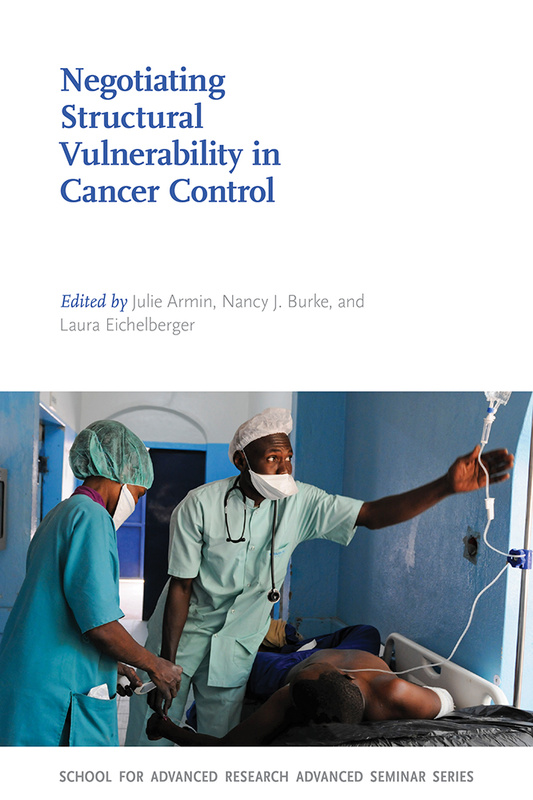Negotiating Structural Vulnerability in Cancer Control
What can case studies about the lived experiences of cancer contribute to an interest in the concept of structural vulnerability? And can a consideration of structural vulnerability enhance applied anthropological work in cancer prevention and control? To answer these questions the contributors in this volume explore what it means to be structurally vulnerable; how structural vulnerabilities intersect with cancer risk, diagnosis, care seeking, caregiving, clinical-trial participation, and survivorship; and how differing local, national, and global political contexts and histories inform vulnerability. These case studies illustrate how quotidian experiences of structural vulnerability influence and are altered by a cancer diagnosis at various points in the continuum of care. In examining cancer as a set of diseases and biosocial phenomena, the contributors extend structural vulnerability beyond its original conceptualization to encompass spatiality, temporality, and biosocial shifts in both individual and institutional arrangements.
Negotiating Structural Vulnerability in Cancer Control highlights the continuing lack of equity in cancer care.'--Carlo Caduff, Medical Anthropology Quarterly
The authors of the studies in this volume perform a valuable function in situating cancer control in politics and history at the local, national, and global levels. . . . Negotiating Structural Vulnerability in Cancer Control is an important contribution to the literature on cancer control.'--Choice
Julie Armin is an assistant professor in the Department of Family and Community Medicine at the University of Arizona. Alongside her clinical colleagues, she conducts research that aims to improve equity in cancer care. Nancy J. Burke is a professor of anthropology and public health at the University of California, Merced, where she also serves as the chair of public health. She is a full member of the UCSF Helen Diller Comprehensive Cancer Center. Laura Eichelberger is the senior epidemiology and health research consultant at the National Tribal Water Center of the Alaska Native Tribal Health Consortium and a former Cancer Prevention Fellow at the National Cancer Institute.
Acknowledgments
Chapter One. Introduction: Framing Cancer and Structural Vulnerability
Nancy J. Burke, Julie Armin, and Laura Eichelberger
Part I. Negotiating Vulnerability
Chapter Two. Cancer and Precarity: Rights and Vulnerabilities of West African Immigrants in France
Carolyn Sargent and Peter Benson
Chapter Three. Bringing the People into Policy: Managing Cancer among Structurally Vulnerable Women
Julie Armin
Chapter Four. Anxious Provocations: Engagements with Cancer Screening by the Medically Underserved
Susan Shaw
Chapter Five. The Familiarity of Coping: Kinship and Social Location in the Safety-Net Experience of Cancer
Simon Craddock Lee
Part II. Mapping Institutions, Interventions, and Inequalities
Chapter Six. Connecting Rural Patients with Urban Hospitals across the Cancer Care Continuum: A View from Vietnam on a Global Problem
Maria Stalford
Chapter Seven. Stuck in the Middle: Patient Navigation and Cancer Clinical Trials Recruitment in the Safety Net
Nancy J. Burke
Chapter Eight. Colonial Legacies: Population Panics, Reproductive Control, and Cancer-Related Fertility Care in Puerto Rico
Karen Dyer
Chapter Nine. The Westernization Effect: Biocommunicable Cartographies, Epidemiologic (In)Visibilities, and the Cancer Transition Theory
Laura Eichelberger
Chapter Ten. Afterword: Revealing Erasures, Configuring Silences: Structural Vulnerability in Cancer Prevention, Treatment, and Research
James Quesada
Notes
References
Contributors
Index





